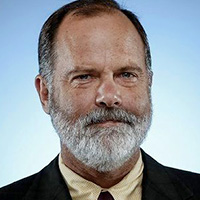Contemporary division in America takes many forms. There are red states and blue, of course, with liberals clustered along the nation’s coastlines – especially in California – and conservatives spread out across the middle of the country, (though, as this issue’s map vividly illustrates, the overlap of red and blue, and the concentrations of each, are more complex than state-by-state).
There are believers and non-believers, and believers of competing faiths. We tend to think of religious divisions as those among faiths, but fervent believers sometimes have more in common across denominations than those who may share a religious order but with different degrees of orthodoxy.
There are differences between men and women, and then divisions among men and among women. The young and old often carry different interests and ideals, while changing demographics inexorably are transforming us from a nation run by white men into a polyglot, multilingual society – a change that is both exhilarating and, for some, threatening. Asked to name the five most important issues facing American society today, Democrats and Republicans agreed on none.
Change and division are natural sources of conflict, and modern media love conflict. What’s most curious about today’s media is that they are both a cause and a result of division. Is Fox (or MSNBC) successful because it capitalizes on division? Or is division deeper because of Fox (or MSNBC)? Meanwhile, cable television is fast-becoming yesterday’s medium. Having replaced much of network television’s influence, cable is now being eclipsed by one form of social medium after another. Technology is not for the timid.
The effects of all this on discourse are often discouraging and sometimes surprising. As Tim Groeling’s research is demonstrating, news selection often is framed around discord, contributing to the same divisions it is chronicling. Lorrie Frasure-Yokley is fine-tuning the examination of divisions that once were papered over by assumptions: She has demonstrated, for instance, significant differences between the politics of women of color and those of white women, suggesting that demographers who examine the politics of “women” may be headed for confusion. Zachary Steinert-Threlked dives through impossibly deep reservoirs of social media posts to divine what it is that generates dissent; he is discovering, among other things, that what draws a young person to a rally in an authoritarian country and in a liberal democracy are often different, both in terms of the motivation and the leadership of dissent.
The work of these scholars provides insight into the hows and whys of political division. Then there is the work of Martin Gilens. He is examining what deepens division, and he identifies the culprit as a decline in democracy. He goes a step farther and proposes reforms that dare to reconsider long-held norms in American society, challenging rules, for instance, about who votes and how. To some, that makes him scary; to others, it makes him overdue.
These are big and important ideas for Americans to consider. Division has led to discord, which is increasing division. Division has led to paralysis, and paralysis has sharpened discord. Wallowing in this descending spiral doesn’t help. Studying it and remedying it does.
Importantly, the solutions to these intertwined pathologies are not found simply in lowered voices or a commitment to nice words. As the work in his issue makes clear, this country’s divisions are real, not just rhetorical. Solutions do not demand politeness, though sometimes that would be welcome. What is required? A commitment to honest inquiry and genuine reform.
























